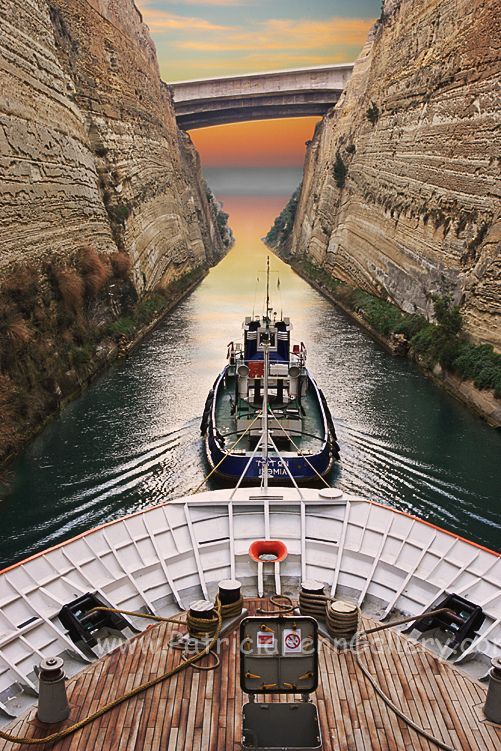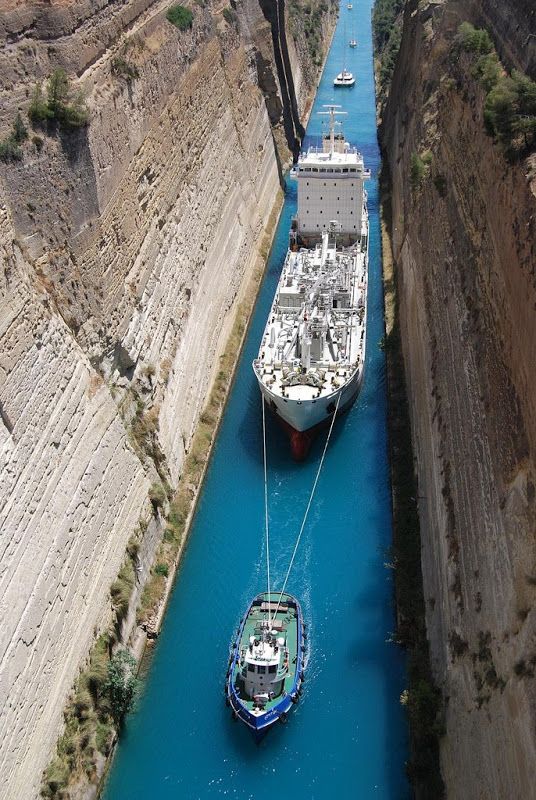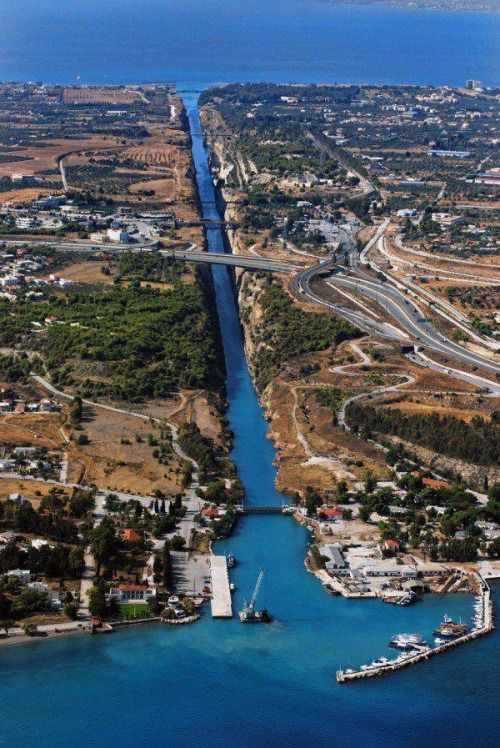The famous Corinth Canal connects the Gulf of Corinth with the Saronic Gulf in the Aegean Sea. It cuts through the narrow Isthmus of Corinth.
The Corinth Canal is a renowned engineering marvel that connects the Gulf of Corinth with the Saronic Gulf in the Aegean Sea. It traverses the narrow Isthmus of Corinth, separating the Greek mainland from the Peloponnese peninsula. This remarkable feat of human ingenuity has not only facilitated maritime transportation but has also become a significant tourist attraction.
Construction of the Corinth Canal began in the late 19th century, with the aim of creating a shortcut for ships traveling between the Adriatic and Aegean Seas. The project faced numerous challenges, including financial constraints, technical difficulties, and the formidable task of cutting through solid rock. The canal’s construction was ultimately completed in 1893, after more than a decade of diligent work.
The Corinth Canal measures approximately 6.4 kilometers (4 miles) in length and is around 24 meters (79 feet) wide. Its depth reaches up to 8 meters (26 feet), allowing medium-sized ships to pass through. The canal’s narrow width and towering cliffs on either side create a stunning visual spectacle, making it a popular destination for tourists and a favorite spot for photographers.
The canal’s strategic location provides a crucial shortcut for ships, saving them the arduous journey around the Peloponnese peninsula. It serves as an important maritime route, connecting the Ionian and Aegean Seas and enabling vessels to bypass the lengthy circumnavigation of the Peloponnese. The canal has also become a vital link for trade and commerce, enhancing connectivity and facilitating the movement of goods.
Beyond its practical significance, the Corinth Canal is a remarkable sight to behold. The sheer cliffs that flank the canal create an awe-inspiring backdrop, with their imposing presence and rugged beauty. As ships navigate through the narrow passage, visitors can witness the spectacle of vessels gracefully maneuvering their way between the towering walls, creating a truly mesmerizing experience.
The Corinth Canal has also attracted thrill-seekers and adventure enthusiasts. Bungee jumping from the bridge that spans the canal has become a popular adrenaline-pumping activity, offering an exhilarating perspective and a unique way to appreciate the canal’s grandeur.
Tourists from around the world visit the Corinth Canal to marvel at its engineering prowess and breathtaking surroundings. The canal’s location near the historic city of Corinth and its proximity to popular Greek destinations, such as Athens and the Peloponnese, make it easily accessible for travelers.
As visitors stand at the canal’s edge, they can soak in the rich history and natural beauty that surround this iconic landmark. Whether observing the passage of ships, exploring the nearby ancient ruins, or simply reveling in the splendor of the canal itself, a visit to the Corinth Canal is an unforgettable experience that showcases the harmonious blend of human achievement and natural wonders.
Hits: 3











